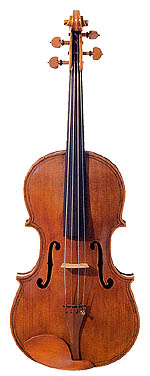
| Opus 35 - Viola |
|
|
The violin owes its brilliance to the perfect ratio between its tessitura and dimensions. If applied to the viola, this ratio would yield an instrument too large and difficult to play. By cheating a bit on the ratio, the luthier obtains an instrument with structural and acoustic imperfections, but with a unique tone and character. Developed in northern Italy, the viola was already a well-established member of the violin family by about 1535. It was used to play the middle parts in musical ensembles, usually to round out the harmony. It was not until the mid-eighteenth century that it came into its own as a solo instrument. The viola plays an important role in chamber music, especially in string quartets. With Haydn, Mozart and Beethoven, the quartet achieved a perfection that elevated it to the leading genre in classical chamber music. As chamber music developed, the four instruments in the string quartet acquired equal importance, with the viola and violoncello becoming as prominent as the two violins. When Mozart and Haydn organized informal quartets with their colleagues Dittersdorf and Vanhal, the viola was played by Mozart.
In 1980, violinist David Prentice was shopping for a better violin but was put off by the price. He decided then and there to embark upon the adventure of instrument making. The manual nature of the work, he confides, brought back the childhood thrill of building scale models and playing with Meccano sets. He sought the necessary information on violin making in books but found them rather perplexing. However, he met luthier Joseph Curtin, who proved extremely helpful. Prentice made his first violin in a course given by luthier Philip Davis at the Ontario College of Art, and was so satisfied with his first instrument that he decided to pursue a career in the field. Initially, Prentice made both violins and violas, with the help and advice of John Newton and Joseph Curtin. But he later specialized in violas, whose dimensions and design, less standard than those of the violin, allowed him more freedom. Building one instrument at a time, he has found in his daily work a balance between the technical and the sculptural and creative facets of his art. His clients include advanced students and professional musicians, and his instruments appear in symphony orchestras and string quartets across Canada and the United States. In 1990, he received a Canada Council grant. "The most fascinating aspect of instrument making for me is sound," says David Prentice. "How to achieve a consistently good quality of sound, how to maximize power, how to achieve different tonal colours: these are questions that rely on so many variables from quality of wood to arching, to varnishing and set-up. This sound element raises the craft of instrument making from high-quality woodworking to an art: the art of sound production."
|
 |



